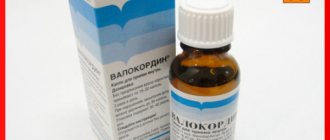Car exhaust gases are a global modern problem in an industrialized society.
As world statistics show, the spent working fluid of an internal combustion engine is the main reason for excess concentrations of various toxic substances in the atmosphere of large cities, the formation of artificial smog and the deterioration of the general environmental situation on the entire planet.
How can you get poisoned by car exhaust? What to do if you are poisoned by exhaust gases? Is death possible in severe poisoning? You will read about this and much more in our article.
Exhaust gas composition
According to environmental studies, in large cities almost 90% of air pollution comes from vehicle exhaust.
The biggest polluters are cars running on diesel fuel. The type of gasoline burned also plays a big role. For example, sulfur gasoline releases sulfur oxides into the atmosphere, and leaded gasoline releases chlorine, bromine and lead. But the most common composition of exhaust gases is as follows: - nitrogen - 75%; — oxygen – 0.3-8.0%; – water – 3-5%; – carbon dioxide – 0-16%; — carbon monoxide – 0.1-5.0%; — nitrogen oxides – 0.8%; — hydrocarbons – 0.1-2.5%; — aldehydes – up to 0.2%; — soot – up to 0.04%; — benzopyrene – 0.0005%.
How to Simply Recommend
Why the medicine does not work The key to successful treatment is, of course, following all the doctor’s recommendations and informing him of all significant changes during therapy. However, a specialist can talk as much as he wants about the regimen and duration of taking the drug, but most patients will still violate these rules. Read more
First aid
A person who has been poisoned by exhaust fumes must be provided with the promptest possible first aid. Basic first aid actions include:
- Transporting the victim to open, clean air . It must be carried out with caution, using personal protective equipment for the person carrying out the activity due to the direct danger of receiving similar poisoning. The best option is to use a fully closed mask and a self-contained cylinder with an oxygen-air mixture. If this means of protection is not available, then you can replace it with a gas mask with a hopcalite cartridge and an additional filter. The last resort is to temporarily hold your breath. Classic cotton-gauze bandages and other simple methods of personal protection are not effective;
- After transferring the victim to an open space with clean air, it is necessary to call an ambulance , free the person from clothing that restricts breathing, and, if present, allow him to breathe oxygen;
- If the patient is unconscious and there is a high probability of involuntary vomiting on his part, it is worth moving the victim to a horizontal position and laying him on his side to prevent suffocation, while at the same time monitoring the condition of the respiratory tract;
- If there is no breathing or heartbeat, begin manual cardiopulmonary resuscitation and carry it out until the ambulance arrives;
- In the absence of an ambulance for a long time, it is basic to stabilize the patient’s basic vital signs (breathing and heartbeat), and then independently transport the victim to the nearest hospital with an intensive care unit.
Carbon monoxide
A product of incomplete combustion of gasoline or diesel fuel. This gas is colorless and odorless, so humans cannot feel its presence in the atmosphere. This is its main danger. Carbon monoxide binds hemoglobin and causes oxygen starvation of tissues and organs of the body. This leads to headaches, dizziness, nausea, loss of consciousness and even death.
There are often cases when warming up a car in a closed or even open garage led to the death of the car owner. Odorless and colorless, carbon monoxide causes loss of consciousness and death.
Treatment and recovery after exhaust intoxication
Full treatment of victims after poisoning from car exhaust gases is carried out in a hospital setting. Complex treatment in this case goes in several directions:
- Maintaining vital signs - drug (injections of Cordiamin, Strophanthin, inhalation of Salbutamol, etc.) and instrumentally (up to the use of artificial pacemakers and forced ventilation);
- Dynamic removal of decay products and toxins from the body - antidotes and complexones (pure oxygen, Acizol and other drugs), as well as diuretics (Lasix) are used;
- Symptomatic and supportive therapy is the fight against the most dangerous manifestations of poisoning, edema of the brain, lungs, and so on. A wide range of medications may be used, from corticosteroids and antibiotics to glucose and calcium chloride;
- Counteracting complications with the protection of major organs and systems exposed to the negative effects of vehicle exhaust gases.
During the recovery period, in addition to basic conservative therapy, physical procedures are widely used - pressure chamber, balneology, electrophoresis, UV and IR irradiation, and other measures.
Radiation background
Another important parameter for safe living in an apartment is background radiation. Unfortunately, a person does not have sense organs that react to its excess. But, thank God, radiation contamination of housing is usually extremely rare.
With the entry of small businesses into the home construction and renovation sector, control over the materials used has become much more difficult. Cases of removal of used building materials and scrap metal from the territory of the Semipalatinsk nuclear test site or scrapping of oil industry pipes that had “picked up” radiation underground have been repeatedly recorded. However, home buyers should not be overly concerned about increased levels of background radiation. Unless you should be wary if the house you plan to buy is built from cinder blocks or materials using slag or ash, since exceeding the permissible level of radiation is much more common in these materials.
The article lists only a few factors of environmental safety of housing. Upon closer examination of this issue, one can see a number of other parameters, such as noise, vibration, and so on, which can also cause inconvenience or harm our health.
Information service kn.kz
Apartment location floor
This is the second important point. Not only the comfort of living, but also the levels of housing pollution, noise and lighting depend on the floor. The floor greatly influences the ventilation of the apartment. A particular problem arises with the ventilation of apartments on the upper floors. Many household gases easily rise to the top, so residents of upper floors often breathe what the lower apartments “exhaled.” Interestingly, the use of sealed double-glazed windows, which reduced the ventilation of the apartments, led to a deterioration in the ventilation of apartments.
In modern houses, housing is ventilated using a ventilation chamber passing through all apartments. Like a conventional stove, the draft is higher on the lower floors and very weak on the upper floors, so a resident of the upper floors should take care of additional forced ventilation of their apartment.
However, the air situation for residents of the lower floors is much worse. As a rule, the atmosphere here is polluted by exhaust gases, and the zone of maximum accumulation of harmful substances such as carbon monoxide and aromatic hydrocarbons is located at a height of 3 floors. Already at the 5th floor level there are very few of them. Environmentalists also recommend, in order to improve room ventilation, to choose apartments whose windows face different sides of the building. For the health of residents, it is important that the sun’s rays penetrate into the apartment for at least 2-3 hours a day. This requirement remains for all residential premises, regardless of floor.
Testing a UAZ car for exhaust gases from the muffler in water
A research center that tests engines under various conditions decided to carry out tests. The subjects were the most popular brands of off-road vehicles among Russian residents: UAZ 31519, UAZ 469 (old model) and UAZ 31512.
All cars are densely equipped with expensive equipment and sent to conquer local bodies of water, which are found in large numbers on the path of risky drivers. The river flow is calm, the ford is no more than half a meter deep, from bank to bank - 3-4 meters. “He who doesn’t take risks...,” many extreme sports enthusiasts would think and, pressing the gas pedal, would rush to cross the river.
It was decided to conduct the test in an area where there was a ford. The old UAZ was mercilessly driven into the river so that the entire suspension and, of course, the exhaust pipe were flooded. The car is located against the current, which means that exhaust gases are carried directly under the car.
In the interior of the UAZ, the content of substances harmful to health was constantly measured in the driver’s chest area. The sun is shining, the birds are singing, what could ruin a day like this? Sample result. The content of toxic substances in the cabin air exceeds the permissible values by 15 times! Even worse news was that the device scale reached a maximum of 300 mg/m³, going off scale.
This means that in reality there are many times more hazardous substances... How many times have you participated in something like this in a UAZ? It gives me goosebumps, how miraculously you didn’t get poisoned. A small dose was most likely received, but not life-threatening.
Meanwhile, the UAZ test continues; the car was turned into the current so that the exhaust gases would not be carried under the car. After 5 minutes, the level of emissions in the cabin stopped going off scale and dropped to 172 mg/m³, no longer 400, but also dangerous, because the permissible limit is only 20...
And only after the vehicle with the expedition left the river, the testers opened all the windows, ventilated the car, a couple of minutes passed, and the level of dangerous gases in the air began to take acceptable values.
How to avoid
To prevent exhaust gas poisoning, you must adhere to safety precautions and follow certain rules:
- When working on a vehicle in a confined space, do not start the engine unless there is good ventilation. If there is no ventilation system, you can simply open all the doors and windows wide.
- It is necessary to undergo technical inspection in a timely manner.
- If life situations force you to drive a vehicle with a malfunction, you should periodically evaluate your condition.
- Do not skimp on gasoline and oil for your car.
Compliance with the above recommendations will allow you to adequately protect yourself from poisoning. Intoxication from car exhaust occurs unnoticed, but it is also deadly! When the first signs of intoxication appear, you should call an ambulance as quickly as possible and do not try to treat yourself.
Ways to reduce emissions and toxicity
The incentive to reduce volumes is expected
interest in reducing fuel consumption (a major expense item in road transport).
- The organization of vehicle traffic
has a huge impact on the amount of emissions (not counting fuel combustion and time) (a significant portion of emissions occurs in traffic jams and in front of traffic lights [
source not specified 2249 days
]). With successful organization, it is possible to use less powerful engines at low (economical) intermediate speeds. - It is possible to significantly reduce the content of hydrocarbons in exhaust gases, by more than 2 times, by using
associated petroleum (propane, butane) or natural
gases
as fuel , despite the fact that the main disadvantage of natural gas - a low power reserve - is not so significant for the city. - In addition to the composition of the fuel, toxicity is affected by the condition and tuning of the engine
(especially diesel - soot emissions can increase up to 20 times and carburetor - nitrogen oxide emissions change up to 1.5-2 times). - Significantly reduced emissions (reduced fuel consumption) in modern designs
with injection powered by a stable stoichiometric mixture of unleaded gasoline with the installation of a converter, gas engines, units with superchargers and air coolers, and the use of a hybrid drive. However, such designs greatly increase the cost of cars. - SAE tests have shown that an effective way to reduce emissions of nitrogen oxides (up to 90%) and generally toxic gases is by injecting water into the combustion chamber
.
Humidity and air exchange
The most important factor in environmental harmony is relative air humidity. Excessive humidity leads to the formation of mold and fungi in the corners and on the walls of houses and apartments, which can cause many diseases in humans. Therefore, when buying an apartment, you should take the time to check corners and poorly ventilated nooks and crannies for the presence of characteristic stains from colonies of mold or fungi. If the apartment is on the ground floor, then it would be a good idea to make sure the basement is dry.
Excessively dry air also negatively affects human health. This reduces the resistance of the mucous membranes, making our body accessible to infectious diseases. As a rule, dry air in apartments appears during the heating season, when the vents and windows are securely sealed, and the radiators intensively radiate heat into the space. But if you choose between high humidity and dry air, then it is better to give preference to the second. Dry air is much easier to “fight” than humidity. Fortunately, the modern market offers us a wide range of all kinds of air humidifiers.
Also, one should not forget about the importance of so-called passive air exchange. When inspecting a future apartment, it is advisable to make sure that hoods or ventilation systems are available and in good working order. Ineffective ventilation can cause an increase in indoor air humidity, air pollution and, consequently, many health problems in the future. Naturally, under no circumstances should you cover the ventilation holes with paper or wallpaper.
Registration of purchase and sale of an apartment: list of documents, cost >>>
Consequences and complications
Poisoning by car exhaust gases brings invaluable harm and can cause a huge number of complications, both directly in the reactive period of the pathology and in the medium term.
The most typical consequences:
- Systemic lesions of peripheral nerves, causing various disorders of motor activity, including loss of sensitivity;
- Pathologies of the gastrointestinal tract;
- Kidney and liver failure;
- Cerebral edema and the development of central nervous system diseases;
- Pathologies of the cardiovascular system, including myocardial infarction, angina pectoris, myocardia;
- Diseases of the bronchopulmonary system - from pulmonary edema to pneumonia, obstructive bronchitis;
- Exacerbation of previous chronic diseases and the emergence of new ones;
- Development of oncologies of various etiologies;
- Other problems, depending on the dose of poisoning received and the type of predominantly affecting substance.
| Boiler for a car (08/22/2010). → |
I asked this question quite by accident. Everything in Moscow is in smoke, the CO concentration is 4 times higher. After reading the media about CO, I catch myself thinking: what if CO is not heavier than air, as many people believe, but lighter? And it turned out:
which is EASIER.
At first I approached this issue from the chemical side. Article https://nts.sci-lib.com/article0004998.html: Properties: density 0.968 (air=1). It follows that under normal conditions carbon monoxide is lighter and should accumulate in the upper parts of the room.
Next, I approached this issue from the thermal side. According to Gay-Lussac's law, the lower the air temperature, the greater the air density. As for carbon monoxide - under normal conditions it is quite inert, but as the temperature rises it becomes active and can react with many gases. That is, if the temperature is higher, there will be less carbon monoxide. But for the density of air to become less than the density of CO, and for the latter to become heavier, you still have to try: heat the air to one hundred degrees. Hence the same conclusion. Carbon monoxide will always be less dense - and lighter than air.
Basic physical properties of air at different temperatures
| Temperature | Density | Specific heat capacity, Cp | Thermal conductivity | Kinematic viscosity | K-tm of temperature linear expansion | Prandtl number |
| OS | kg/m3 | kJ/(kg.K) | W/(m.K) | (m2/s) x 10-6 | (1/K) x 10-3 | — |
| 0 | 1,293 | 1,005 | 0,0243 | 13,30 | 3,67 | 0,715 |
| 20 | 1,205 | 1,005 | 0,0257 | 15,11 | 3,43 | 0,713 |
| 40 | 1,127 | 1,005 | 0,0271 | 16,97 | 3,20 | 0,711 |
| 60 | 1,067 | 1,009 | 0,0285 | 18,90 | 3,00 | 0,709 |
| 80 | 1,000 | 1,009 | 0,0299 | 20,94 | 2,83 | 0,708 |
| 100 | 0,946 | 1,009 | 0,0314 | 23,06 | 2,68 | 0,703 |
Next, I approached this issue from the intellectual side. Let's trust the professionals! WHERE are CO detection sensors placed? Look on the Internet, all sensors are placed closer to the ceiling, almost at the highest point, 10-15 centimeters remain. The conclusion is simple: CO is certainly lighter than air.
And finally, first aid rules for CO poisoning and a poisoning schedule:
Symptoms of carbon monoxide poisoning: - muscle weakness appears; - dizziness; - noise in ears; - nausea; - vomit; - drowsiness; sometimes, on the contrary, short-term increased mobility; then movement coordination disorder; - nonsense; - hallucinations; - loss of consciousness; - convulsions; - coma and death from paralysis of the respiratory center. The heart may continue to contract for some time after breathing has stopped. There have been cases of death from the consequences of poisoning even 2-3 weeks after the poisoning event.
The decisive point in recognizing carbon monoxide poisoning may be the same manifestation of signs of poisoning in a large number of people at the same time in the same building or the onset of improvement after the person has left it.
The most common sources are gas and oil furnaces, wood stoves, gas appliances, pool water heaters, and exhaust emitting engines. Cracked furnaces, clogged chimneys, and blocked pipes can allow carbon monoxide to reach your living space. Insufficient fresh air access to the furnace can contribute to the buildup of carbon monoxide in the home. Tight home structures also increase the risk of carbon monoxide poisoning because they do not allow for free ventilation.
Providing first aid for carbon monoxide poisoning.
# In case of carbon monoxide poisoning, the intake of carbon monoxide should be eliminated; # take the victim to fresh air; # if the victim is conscious, he must be laid down, rest and continuous access to fresh air are ensured (fan him with newspaper, turn on a fan or air conditioner); # if the victim is unconscious, it is necessary to immediately begin closed cardiac massage and artificial respiration until the ambulance arrives or until he regains consciousness. # Remember that when removing a victim from a place where there is a dangerous concentration of carbon monoxide, you first need to protect yourself so as not to get poisoned too. To do this, you need to act quickly and breathe through a handkerchief or gauze.
And finally. If you feel like you’re lost in the house, you fall to the floor and crawl to the exit; You will definitely receive a lower dose.
(added 04/28/2012): I answer your questions and guesses.
“I also recently became interested in this issue. And I found the article “Review of household sensors and alarms for dangerous concentrations of carbon monoxide.” In a nutshell, carbon monoxide is lighter than clean, i.e., dry air, which is practically not observed near the Earth’s surface. There is not much actual air with water vapor, but it is still heavier. So your advice to “fall on the floor” if you suspect intoxication may turn out to be dangerous. With respect and best wishes, Natalya."
Let's figure it out.
LET you be right. LET the article also be right that carbon monoxide rises upward only at first. Then it may seem right that the sensors are at the top to prevent the exact moment the gas rises to the ceiling. But here are the nuances.
The gas sensor is attached to the wall at a distance of several centimeters from the ceiling. If we assume that CO creeps down the walls, then there should be at least 4 sensors in the room, 1 on each wall. But installer organizations install one. The gas source does not have to be located directly in the center of the room, so it is possible that the gas will slide along another wall, or not along the wall at all. It may turn out that the sensor simply does not work. By the way, why does the force of gas release have to be so lethal to reach the ceiling? After all, smoldering can be low-temperature or small in area; the gas simply does not reach the ceiling, cools down somewhere along the way and rushes down.
THEN the result is a statement: all organizations install sensors not in accordance with the real state of affairs. This means: - our state can fine them; — they may be sued by injured clients; — all chemist scientists on our planet are uneducated regarding CO.
Now I'm going backwards.
I don’t believe that in all these years after the discovery of CO (Aristotle, 323 BC) there was not a single scientist, future candidate of science, or any smart guy who would not correct the incorrect information on CO; and based on correct interpretations, requirements for the installation of sensors would be developed.
I don’t believe that the organizations that install CO sensors are so fearless that they absolutely don’t care where they put the sensors. In Russian business, any mistake can be fatal, but here it is far from a trivial matter.
I quote you: “In a nutshell, carbon monoxide is lighter than clean, that is, dry air, which is practically not observed near the surface of the Earth. There is not much real air with water vapor, but it is still heavier.” Yes, there is no completely dry air on the surface of the Earth. Humid air is lighter than dry air because the molecular weight of air is 29 g/mol, and that of water vapor is 18. Based on these relationships, at equal temperature and pressure, the density of water vapor is 0.620 of the density of dry air. Absolute humidity is a physical quantity that shows the mass of water vapor contained in a square meter of air. Depends on the air temperature, here is the table:
| Temperature, degrees Celsius | −30 | −20 | −10 | 0 | 10 | 20 | 30 | 40 | 50 | 60 | 70 | 80 | 90 | 100 |
| Maximum absolute humidity, g/m³ | 0,29 | 0,81 | 2,1 | 4,8 | 9,4 | 17,3 | 30,4 | 51,1 | 83,0 | 130 | 198 | 293 | 423 | 598 |
All calculations are performed for a cubic meter of air for convenience. Let us have a temperature of 25 degrees Celsius when the density of CO is 1.145 kg/cubic meter. Then the maximum absolute air humidity will be 0.0235 kg/cubic meter. Knowing all this, you can calculate the density of the maximum humidified air. The density of dry air is 1.18 kg/m. Making it wet means putting 0.0235 kg of water into it and displacing 0.0235 / 0.62 = 0.0379 kg of itself. As a result, we have a reduced density: 1.18 + 0.0235 - 0.0379 = 1.1656 kg/cubic meter. But it is still more than 1.145 kg/cubic meter.
If you find the CO density for 30 degrees and above, you can make your calculation; but I suspect that it will be superfluous, because... in 30-degree heat, no one lights the stove. And no one does kindling in the winter until the temperature is 30 degrees in the room.
Tags:
- gas
- lighter than air
- norm
- poisoning
- health section
- ideas section
- pseudo-scientific section
- chemistry section
- heavier than air
- carbon monoxide
Housing location area
The first thing you need to pay attention to is the environmental well-being of the area. Everyone can evaluate it independently. It is enough to look around, noticing the proximity of industrial enterprises that give themselves away as chimneys that smoke the sky, and highways that “supply” the air for tens of meters around with bluish products of fuel combustion that are not at all healthy for health. You should be aware that exhaust gases spread at least 200 m from the highway. In addition, you need to make sure that there are no gas stations nearby that generously pour this fuel into car tanks and, in the process, release a whole range of chemical compounds into the surrounding area. It would also be a good idea to look at the sky above the area of the proposed housing site in calm weather.
If smog and exhaust gases are accessible to our vision and senses, then electromagnetic pollution is not felt by us and at the same time can cause serious harm to our health for many years.
Therefore, when choosing a future area of residence, it is advisable to avoid the proximity of powerful transmitting antennas and high-voltage power lines. The wires of a working power line create electromagnetic fields (EMF) of industrial frequency in the adjacent space. The distance over which these fields extend from the line wires reaches tens of meters and depends on the voltage class of the power line. Of course, it is impossible to completely avoid EMF sources in the modern world. And there is no need to be afraid of this, since a healthy person suffers from a relatively long stay in the field of power lines. Short-term exposure (minutes) can lead to a negative reaction only in hypersensitive people or in patients with certain types of allergies. This results in general fatigue, passivity, decreased performance, diseases of the nervous, immune, endocrine and reproductive systems. Thus, if you doubt the safety of such a “neighborhood,” then, of course, it is better to conduct an electromagnetic analysis of your home.
When choosing an area, it is also advisable to pay attention to the presence and area of green spaces in it. In addition to improving the aesthetic appearance of the area, they noticeably purify the air around them, reducing the amount of harmful impurities in it, enriching it with oxygen, and serve as a shield from city noise.
Read about when it is better to refuse to buy an apartment here.
Degree of poisoning
There are 3 degrees of severity:
- Easy. Characterized by loss of consciousness, tachycardia and rapid breathing. At this degree, cerebral symptoms are most pronounced.
- Average. In this case, symptoms of impaired consciousness, fainting, mental changes, signs of damage to the brain stem, and impaired coordination of movements come to the fore.
- Severe form. Occurs if the victim is not provided with first aid on time. Characterized by loss of consciousness, coma, severe respiratory dysfunction, arrhythmia, or even cardiac arrest.









